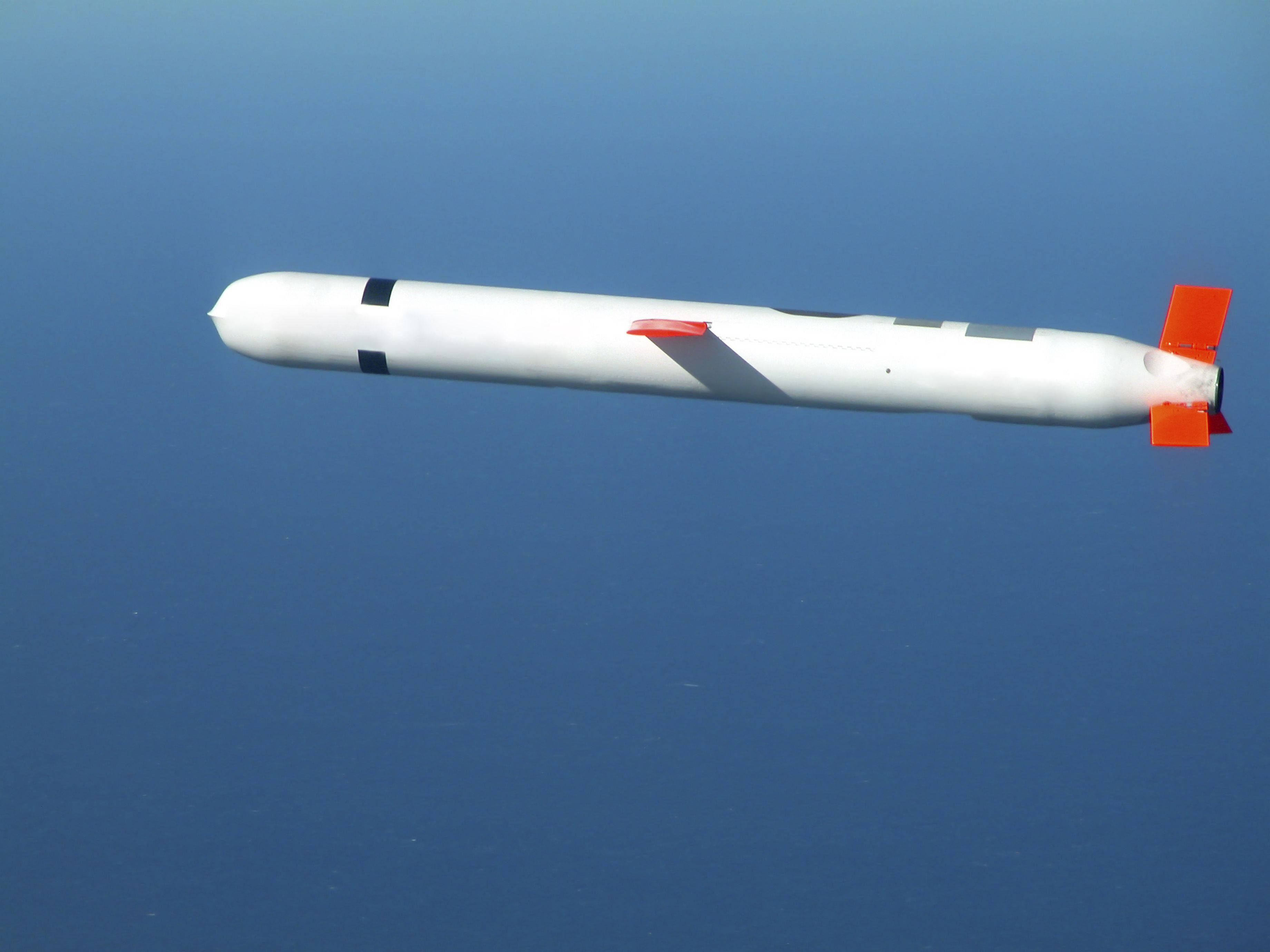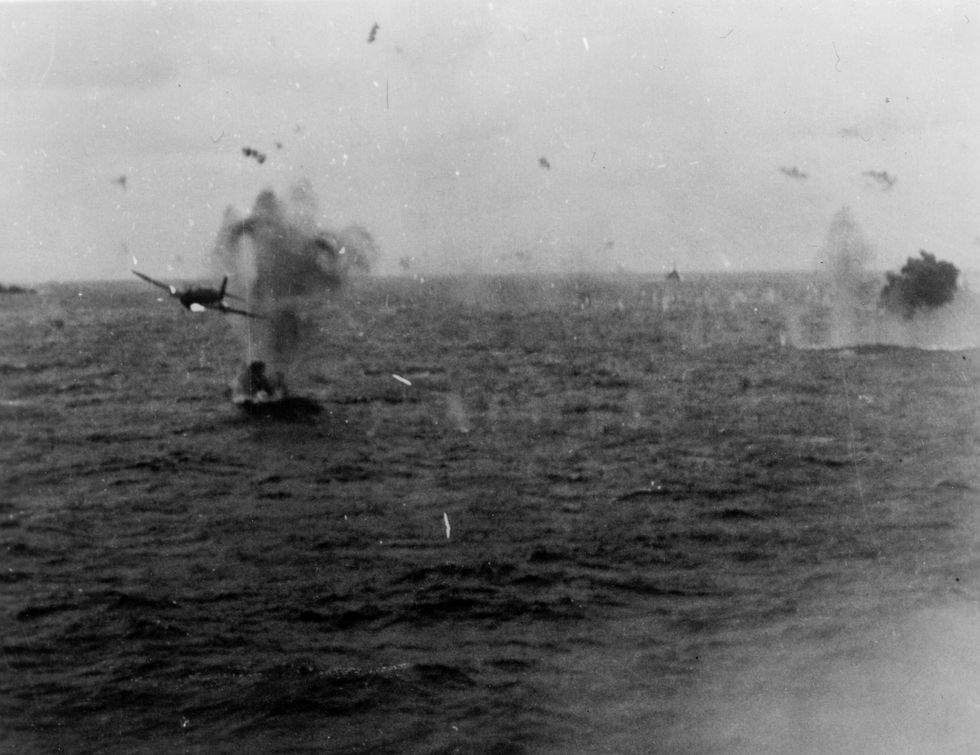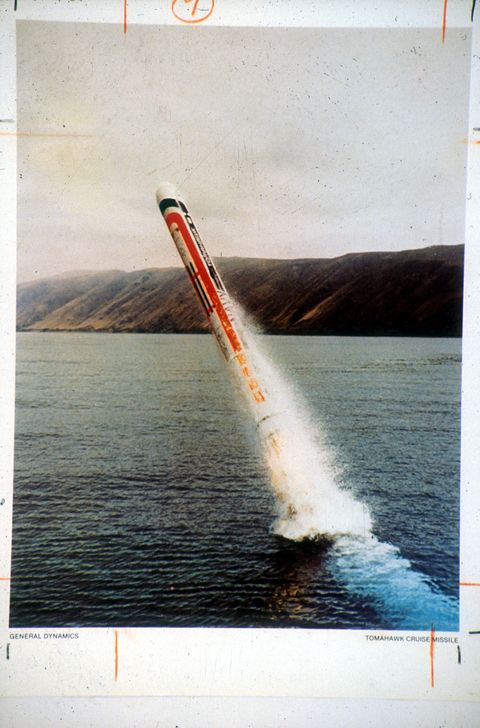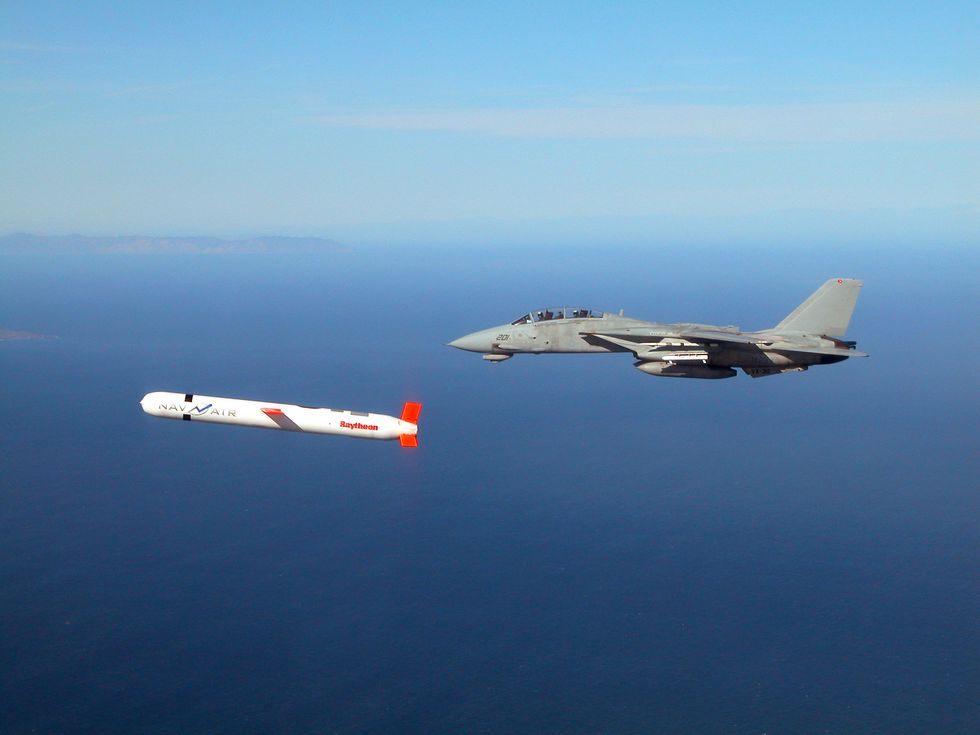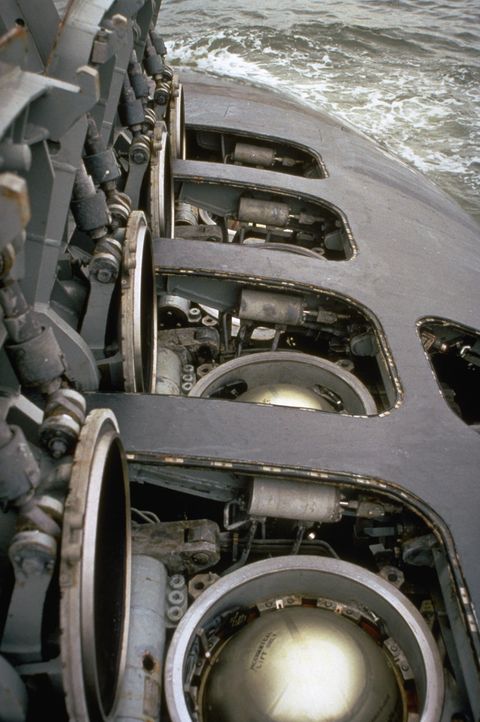- The cruise missile is one of the most useful weapons that major military powers employ today.
- They’re not like other missiles; instead, cruise missiles work more like drones.
- Ironically, the inspiration for the first cruise missiles involved pilots—the infamous kamikazes of World War II.
One weapon that establishes a military power in a completely different category from the rest is the cruise missile. Originally designed to deliver nuclear weapons at long distances, it’s become the go-to weapon for conventional precision strikes, and is currently front and center in Russia’s invasion of Ukraine.
But as the cruise missile is now in its fifth decade of use, there are signs it’ll need some adjustments to stay relevant on the modern battlefield.
Divine Wind
A cruise missile is a subsonic guided missile that uses a turbojet, a smaller version of the jet engines that power today’s airplanes, to reach its targets. Cruise missiles often have small, stubby wings to allow them to bank and turn, following an invisible flight path in the sky. Modern cruise missiles use satellite navigation to guide themselves to target, and some can even take pictures of the target area, allowing operators to retarget them in midair. The missile’s payload is typically a warhead in the 1,000-pound weight class, often with the ability to penetrate earth and concrete to target underground shelters.
The first cruise missiles were Japan’s kamikaze planes of World War II. The kamikaze, or “divine wind,” was part of the Japanese Special Attack Units. Created out of desperation and meant to curb the inexorable advance of U.S. forces across the Pacific, kamikaze pilots were sent on one-way missions to target ships of the U.S. Pacific Fleet. The planes were loaded with explosives, and the pilots flew low and fast to avoid detection until the last possible moment.
Kamikaze missions were incredibly successful. In the first four months of their use, an estimated 34 percent of all kamikazes reached their targets. Much of their success is likely attributable to American forces’ disbelief that pilots could commit suicide for their mission. But the low-flying mission profile and the pilot’s ability to recognize threats and avoid them were also undoubtedly factors. In the 1970s, when U.S. military planners originally conceived of the cruise missile, the kamikazes were likely not far from anyone’s mind.
How Cruise Missiles Work
Cruise missiles were originally designed to carry nuclear weapons long distances, allowing bombers to strike their targets without entering the range of an adversary’s air-defense weapons. Conventional rocket-powered missiles didn’t fit the bill: rocket engines are designed to provide speed, and burn up fuel quickly. A cruise missile would need an enormous rocket engine to reach a distant target, with the result being a missile so big only a few would be able to fit inside a bomber.
Instead of rockets, engineers took a different tack: small turbofan engines that burn jet fuel. Turbofan engines are much more efficient, allowing a 21-foot-long missile to carry enough fuel to fly 1,000 miles, plus a 1,000-pound high-explosive warhead (or W-80 thermonuclear warhead) and a guidance system. The downside was that a turbofan-powered cruise missile could not fly particularly fast, just about 500 miles per hour.
A subsonic cruise missile flying a straight flight path and unable to take evasive action would prove easy meat to any enemy interceptor that happened upon it. The first modern cruise missile, the American-made Tomahawk, was designed to fly low, less than 100 meters above the ground. This limited the range at which ground-based radars could detect a cruise missile, as radar waves conform to the curvature of Earth. This also frustrated enemy fighters, whose nose-mounted radars found it difficult to pick out a cruise missile against the clutter created by the ground below. While cruise missiles were too slow to become first-strike weapons, they were effective for retaliatory strikes against heavily defended airspace.
Early Tomahawk cruise missiles followed a pre-programmed flight path to target using a system called terrain contour matching (TERCOM). In TERCOM, a radar altimeter scans the terrain below the missile, then compares it to a terrain elevation map stored in its onboard computer brain. If the two match, the missile is on the right flight path; if they don’t match, the missile adjusts course. Programming TERCOM for a long-range mission was a notoriously time-consuming process, and had to be done at a computer terminal.
As the Tomahawk neared its target, it switched over to a completely different navigation system: digital scene matching and area correlation (DSMAC). DSMAC used an optical sensor that took pictures of the ground and compared them to actual sites on the final route to the target. Together, TERCOM and DSMAC delivered unheard of accuracy, allowing Tomahawks to fly hundreds of miles and strike specific parts of land targets, even specific parts of buildings.
More recent cruise missiles, including newer versions of the Tomahawk, have done away with the old navigation systems in favor of using GPS to guide themselves to a fixed target. This has had the effect of making an already accurate missile even more accurate—reportedly to within 32 feet of a target. The Tomahawk Block IV version, introduced in the 2010s, included a camera that could send back imagery to the missile’s controllers, allowing a missile to be re-tasked in midair if its target was already destroyed. Block Va, the latest version, adds the ability to target and attack moving ships at sea.
Combat Use
The Tomahawk missile was the first cruise missile fired in anger. U.S. Navy warships fired a total of 288 Tomahawks during Operation Desert Storm in 1991. Tomahawk missiles have also been fired at Bosnia, Sudan, Syria, Yemen, Libya, Somalia, and Afghanistan. U.S. and U.K. forces have delivered just over 2,000 Tomahawk missiles against operational targets, with more than half against Iraq.
In recent years, other countries have also used cruise missiles in combat. In October 2017, Russia began cruise missile strikes against so-called terrorist targets in Syria. These Novator 3M14 Kalibr cruise missiles are very similar to Tomahawk missiles, but use Russia’s GLONASS satellite navigation system, an alternative to the American GPS. Russia has launched a steady stream of air- and sea-launched cruise missiles against Ukraine since the early hours of the invasion on February 24, 2022, but a shrinking missile stockpile has led to the attacks becoming less frequent, supplemented by Iranian-made kamikaze drones.
The war in Ukraine has also seen the use of two European cruise missiles, the U.K.’s Storm Shadow and the French SCALP missile. The two are essentially the same, with a 340-mile range and 990-pound warhead. The missiles donated to Ukraine are launched from specially modified Su-24 Soviet-era strike jets. Storm Shadow/SCALP was also used against the Khaddafi regime in Libya in 2011, ISIS in 2015, and by Saudi Arabia against Yemeni rebels in 2016.
The Russo-Ukrainian War has also confirmed an important, long suspected fact: low-flying, subsonic cruise missiles are vulnerable to man-portable surface-to-air missiles. In 2022, a Ukrainian National Guardsman was filmed shooting down a Russian cruise missile with an Igla surface-to-air missile. It was the first known case of a shoulder-fired missile, typically carried by infantry, shooting down a multi-million dollar cruise missile. How this event will affect future cruise missiles remains to be seen.
The Takeaway
Cruise missiles have dramatically changed warfare, as one might expect from a weapon that can fly 1,000 miles and deliver a half-ton high-explosive warhead within 32 feet of a target. The missiles allow countries that can afford them the ability to execute precision strikes on heavily defended targets without endangering pilots or aircraft.
The war in Ukraine will likely impart lessons on the next generation of cruise missiles, but the platform isn’t going anywhere anytime soon.

Kyle Mizokami is a writer on defense and security issues and has been at Popular Mechanics since 2015. If it involves explosions or projectiles, he's generally in favor of it. Kyle’s articles have appeared at The Daily Beast, U.S. Naval Institute News, The Diplomat, Foreign Policy, Combat Aircraft Monthly, VICE News, and others. He lives in San Francisco.
